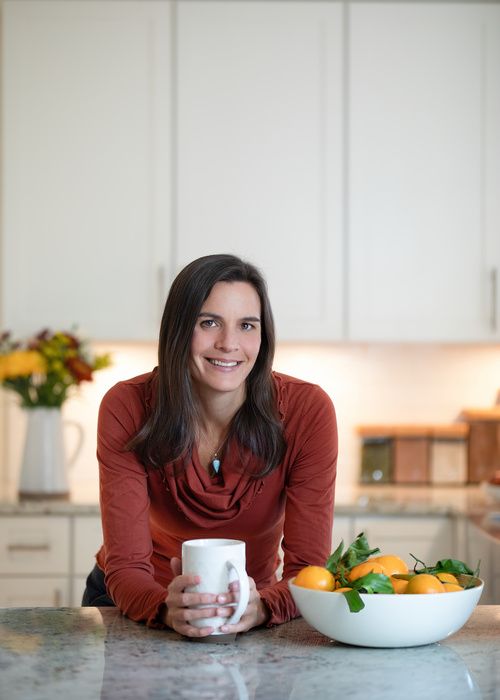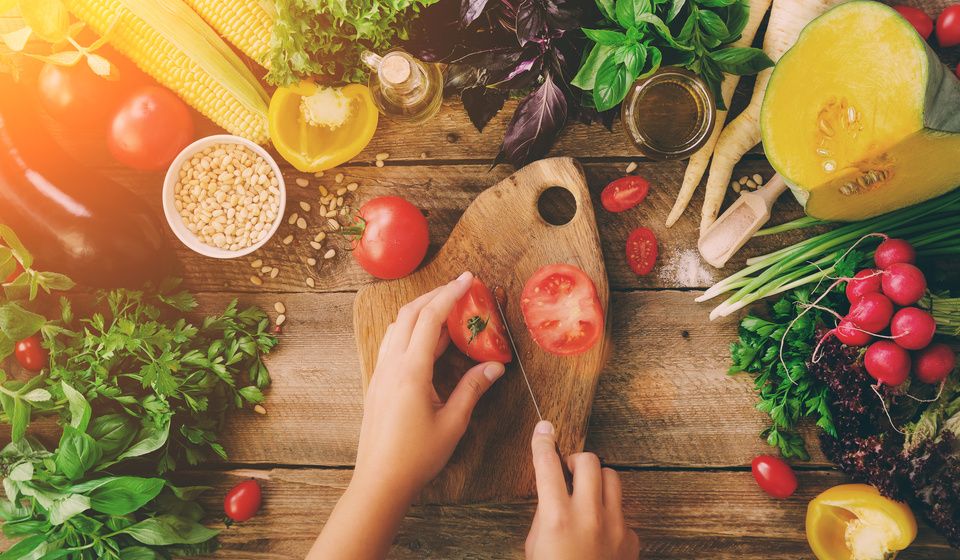How to Leave the Known and Rewire Your Brain for Lasting Change
Ali Segersten Apr 18, 2025
There comes a moment, often disguised as discomfort, when you know it’s time to change. Time to stop shrinking into old patterns that once kept you safe, but now keep you stuck. Time to step over the edge of the known and into the luminous unknown where real change begins.
But if you’ve ever tried to shift your diet, a habit, a thought loop, or a way of being that feels like second nature, you know how hard it can be. Your mind may long for transformation, but your nervous system clings to the familiar—even when it no longer serves.
This isn’t weakness. It’s biology.
Your brain is wired to protect you—to favor what’s known, what feels safe, what conserves energy. It stores habits—of thought, behavior, even self-talk—like well-worn trails in the forest. Walking a new path requires effort, repetition, and, most of all, self-love.
Why We Stay Stuck
Change doesn’t begin with doing—it begins with seeing. And sometimes what we must see first is the invisible scaffolding of the familiar: the thought loops, the dietary patterns, the behavioral grooves, the subtle ways we stay small because it feels safer than stepping into the unknown.
Your brain is designed for survival, not transformation. It prefers certainty, predictability, and energy efficiency. It builds habits—of behavior, thought, even identity—through a process called neuroplasticity, where repeated experiences strengthen specific neural pathways. Over time, these pathways become well-worn trails. Automatic. Comfortable. And hard to leave.
This is called the habit loop, and it has three parts:
- Cue (a trigger: stress, fatigue, emotion)
- Routine (the behavior: the snack, the scrolling, the self-criticism)
- Reward (a dopamine hit, a numbing of pain, a temporary feeling of control)
Even when the outcome no longer serves us, the brain will favor what it knows.
But there’s more.
When you’ve been living in patterns that stem from trauma, chronic stress, or dysregulation, your nervous system adapts to see these patterns as “normal.” This is why real change can feel unsafe—your body interprets unfamiliar as dangerous, even when your heart longs for healing.
You’re not broken. You’re conditioned.
This understanding is the key that unlocks compassion. When you stop blaming yourself and start witnessing your patterns with curiosity, you create space for something new.
And the truth is: your brain can change.
But it needs your love, your patience, and your willingness to walk a new path—again and again.
So How Do We Actually Change?
The bridge between the life you’ve known and the one you’re being called into is built one small step at a time. Lasting transformation doesn’t require force—it requires consistency, presence, and devotion.
With each repetition of a new behavior, a new thought, a new food choice, a new way of relating to yourself, you are literally rewiring your brain.
What follows is a neuroscience-backed, heart-led path forward. These five steps will help you move out of the familiar and into freedom—gently, gradually, and in a way that honors your nervous system’s need for safety.

Step 1: Awareness – You Can’t Change What You Can’t See
Every transformation begins with awareness. Before you can shift a pattern, you must learn to witness it—without judgment, without rushing in to fix. This is where true power begins: in the pause. In the noticing.
When you bring awareness to a recurring habit or thought loop, you activate the prefrontal cortex—the part of your brain responsible for conscious choice and self-regulation. This is how you begin to unhook from the automatic and step into intention.
Throughout your day, gently notice when you're operating on autopilot.
✨ Try this:
- What triggered this?
- What am I feeling in my body right now?
- What do I actually need?
Whether it's reaching for sugar, potato chips, scrolling to numb, or spiraling into self-doubt, awareness opens the doorway to change. Not by shaming yourself, but by illuminating the truth with loving attention.
Remember: there is no failure in seeing your pattern. Only data. Only insight. Only a chance to choose again.
Step 2: Pattern Interruption – Break the Loop with Love
Once you become aware of a pattern, the next step is to interrupt it. You don’t have to completely dismantle it all at once—you just need to create a moment of spaciousness. A breath. A shift. A signal to your brain that something new is possible.
This is called pattern interruption, and it works by disrupting the automatic flow between the cue and the routine. When you do something different—even just slightly—you begin to weaken the grip of the old neural pathway and give rise to a new one.
The key here is novelty. The brain wakes up when something unexpected happens.
✨ Try this:
- When you feel yourself reaching for the comfort food, pause and drink a glass of lemon water instead.
- When you notice your inner critic flaring, speak out loud a phrase of self-compassion: “I’m doing the best I can. I choose kindness.”
- Step outside. Splash cold water on your face. Hum. Stretch. Ground your feet to the earth. Name five things you can see around you.
- Cook yourself one beautiful, nourishing meal you’ve never tried before—and notice how it feels to eat with intention and care.
- These small acts shift your state—from survival mode to presence.
Each time you gently interrupt a habitual reaction, you reclaim your agency. You teach your nervous system that change is safe, and you open a new window of possibility.
And when you pair a pattern interruption with nourishment—like reaching for a stabilizing snack, a nutrient-dense smoothie, or a warm cup of herbal tea—you’re not just breaking the loop. You’re building a new one rooted in care.
Step 3: Replace with Something Nourishing – Create a New Loop of Care
Interrupting a pattern is powerful—but to truly rewire the brain, you need to replace it.
Nature abhors a vacuum. So does your nervous system. When you remove an old behavior, thought, or food habit, your brain starts scanning for what comes next. If nothing fills the space, you’ll likely default back to the familiar.
According to recent neuroscience, old habits are more likely to fade when they’re replaced with new behaviors that carry real emotional or physiological rewards. Your brain needs something better to anchor to—not just the removal of the old.
This is why replacement is so important—not as restriction, but as redirection. You’re not just saying no to what depletes you. You’re saying yes to what deeply nourishes.
✨ Try this:
- Instead of reaching for sugar during an afternoon crash, have a protein-rich snack: a handful of pumpkin seeds, a boiled egg, or a smoothie with greens and healthy fats.
- Instead of numbing with your phone at night, create a calming ritual: herbal tea, a warm bath, magnesium, candlelight, soft music.
- Instead of spiraling into self-criticism, anchor into a mantra that brings you home: “I am growing and changing.”
- Instead of defaulting to old food habits, explore a new way of eating—plan or cook meals that deeply nourish and reflect who you’re becoming.
Replacing isn’t about perfection—it’s about offering your brain a new reward. One that is nourishing, stabilizing, and rooted in who you're becoming.
When the replacement feels good, your brain releases dopamine, reinforcing the new habit loop. Over time, that new loop becomes the path of least resistance. It becomes your new normal.
And when you choose a food that regulates blood sugar, soothes inflammation, or supports digestion—you’re not just feeding your body. You’re reinforcing your healing through every cell, every bite, every loving act of nourishment.
Step 4: Repeat with Compassion – Repetition Builds the Pathway, Compassion Makes it Last
Neuroplasticity—the brain’s ability to rewire itself—isn’t built in a single moment. It’s built through repetition. Through gentle persistence. Through doing the new thing again and again, until it becomes the way.
But here’s what most people forget:
Repetition without compassion creates burnout.
Repetition with compassion creates resilience.
Your brain changes best when you feel safe, seen, and supported. That means your healing doesn’t need to be perfect—it needs to be consistent and kind.
✨ Try this:
- Use weekly meal planning as a rhythm of repetition—nourishing your body and reinforcing the new identity you’re stepping into.
- When you forget, fall back, or freeze—pause and whisper: “It’s okay. This is part of the process.”
- Create a visual tracker or daily ritual to mark your wins—tiny as they may be.
- Notice how your new patterns are starting to feel easier, more natural, even when they still require effort.
Each time you repeat your new choice—a thought, a food, a boundary, a breath—you deepen the groove. You reinforce the neural network. You begin to build a life that reflects who you’re becoming, not who you’ve been.
And every time you show up with compassion instead of criticism, you soothe the inner child, the nervous system, the old wounds that believed change meant danger.
Self-compassion is not a detour on the path of growth—it is the path.
And it’s what makes your healing sustainable.
Step 5: Regulate Your Nervous System – Create Safety Within
You can’t change your life from a state of survival. When your nervous system is dysregulated—stuck in fight, flight, freeze, or collapse—your body is not wired to embrace change. It’s wired to protect, to conserve, to survive.
That’s why healing begins with safety.
To build new neural pathways, make new food choices, or embody a new way of being, your body must feel safe enough to let go of the old.
This is the work of nervous system regulation. And it’s just as vital as any meal plan, supplement, or mindset shift.
✨ Try this:
- Begin your meals with three slow, conscious breaths. This activates the vagus nerve, which shifts you into the parasympathetic “rest and digest” state.
- Use sound to regulate: hum, chant, or sing softly. These stimulate the vagus nerve and calm the body.
- Practice cold exposure (splashing cold water on your face or taking a brief cold rinse) to strengthen vagal tone.
- Walk barefoot. Light a candle. Place one hand on your heart and another on your belly while repeating: “I am safe to slow down. I am safe to receive.”
And of course, food is a powerful regulator.
Warm soups, mineral-rich broths, grounding root vegetables, high-quality protein, warm herbal teas, and blood-sugar balancing meals tell your body: I am supported and I am nourished.
When your nervous system is regulated, your capacity to change expands.
You become more resilient, more creative, more aligned with your highest self.
You don’t just think differently—you feel differently. You trust yourself. You follow through. You begin to live in the frequency of your healing.
Begin Where You Are
The life you long for is quietly unfolding within you, even when you cannot see it.
You don’t need to have all the answers, or move without fear.
You simply need to listen for what is calling you forward, and trust yourself enough to answer.
The threshold between the known and the new can feel unnerving at times.
But you don’t have to leap across it all at once. You only need to take one step, and then another.
Each small act of nourishment…
Each moment of self-awareness…
Each time you choose compassion over perfection…
is a seed planted in the soil of your future.
With each step, you are weaving a new story—one rooted in courage, compassion, and the steady returning to your deepest self.
Your Invitation
If you’re ready to create new patterns of nourishment—on your plate and in your life—our Nourishing Meals® platform is here to walk with you.
- Try the Anti-Inflammatory Diet, the Elimination Diet, or explore meals that support nervous system regulation and gut-brain balance.
- Plan your week with ease, clarity, and compassion using our customizable meal plans and grocery lists.
- Take one small step toward lasting change—starting with what you eat, how you feel, and how deeply you care for yourself.
References:
-
Bonaz, B., Bazin, T., & Pellissier, S. (2018). The vagus nerve at the interface of the microbiota–gut–brain axis. Frontiers in Neuroscience, 12, 49. https://doi.org/10.3389/fnins.2018.00049
-
Buabang, E. K., Donegan, K. R., Rafei, P., & Gillan, C. M. (2025). Leveraging cognitive neuroscience for making and breaking real-world habits. Trends in Cognitive Sciences, 29(1), 41–59. https://doi.org/10.1016/j.tics.2024.10.006
-
Duhigg, C. (2012). The power of habit: Why we do what we do in life and business. Random House.
-
Lally, P., van Jaarsveld, C. H. M., Potts, H. W. W., & Wardle, J. (2010). How are habits formed: Modelling habit formation in the real world. European Journal of Social Psychology, 40(6), 998–1009. https://doi.org/10.1002/ejsp.674
-
Porges, S. W. (2011). The polyvagal theory: Neurophysiological foundations of emotions, attachment, communication, and self-regulation. W.W. Norton & Company.
-
Siegel, D. J. (2020). The developing mind: How relationships and the brain interact to shape who we are (3rd ed.). Guilford Press.
-
Veldman, F., Hawinkels, K., & Keszthelyi, D. (2025). Efficacy of vagus nerve stimulation in gastrointestinal disorders: A systematic review. Gastroenterology Report, 13, goaf009. https://doi.org/10.1093/gastro/goaf009

About the Author
Alissa Segersten, MS, CN
Alissa Segersten, MS, CN, is the founder of Nourishing Meals®, an online meal-planning membership with over 1,800 nourishing recipes and tools to support dietary change and better health. As a functional nutritionist, professional recipe developer, and author of The Whole Life Nutrition Cookbook, Nourishing Meals, and co-author of The Elimination Diet, she helps people overcome health challenges through food. A mother of five, Alissa understands the importance of creating nutrient-dense meals for the whole family. Rooted in science and deep nourishment, her work makes healthy eating accessible, empowering thousands to transform their well-being through food.Nourishing Meals Newsletter
Email updates.





Add Comment